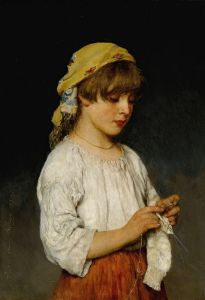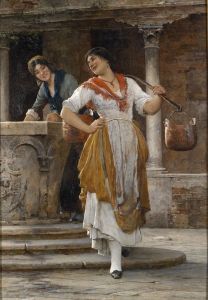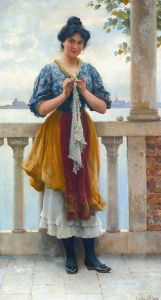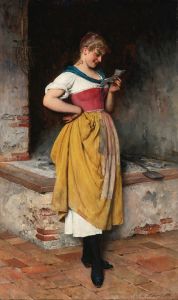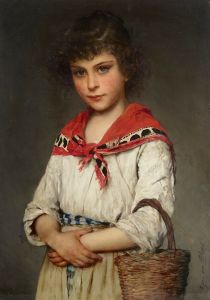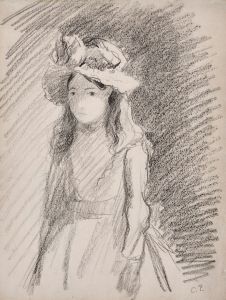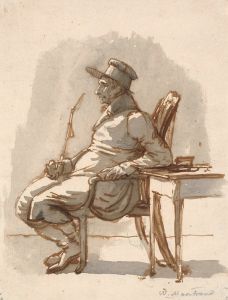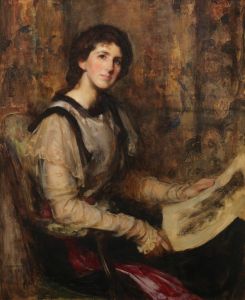
Der perfekte Schuh
A hand-painted replica of Eugen von Blaas’s masterpiece Der perfekte Schuh, meticulously crafted by professional artists to capture the true essence of the original. Each piece is created with museum-quality canvas and rare mineral pigments, carefully painted by experienced artists with delicate brushstrokes and rich, layered colors to perfectly recreate the texture of the original artwork. Unlike machine-printed reproductions, this hand-painted version brings the painting to life, infused with the artist’s emotions and skill in every stroke. Whether for personal collection or home decoration, it instantly elevates the artistic atmosphere of any space.
Eugen von Blaas, also known as Eugene de Blaas, was an Italian painter of Austrian descent, renowned for his genre paintings that often depicted scenes of Venetian life. One of his notable works is "Der perfekte Schuh" (The Perfect Shoe), which exemplifies his skill in capturing everyday moments with charm and detail.
Eugen von Blaas was born on July 24, 1843, in Albano Laziale, near Rome, into an artistic family. His father, Karl von Blaas, was a respected history painter and professor at the Academy of Fine Arts in Vienna. Eugen followed in his father's footsteps, studying at the Academy in Venice and later in Vienna. He eventually settled in Venice, where he became a prominent figure in the local art scene.
"Der perfekte Schuh" is a fine example of von Blaas's work, showcasing his ability to render human figures with precision and warmth. The painting typically features a scene set in a Venetian interior, where a young woman is trying on a shoe, possibly assisted by a shoemaker or a companion. The attention to detail in the clothing and the expressions of the figures is characteristic of von Blaas's style, which often focused on the beauty and elegance of everyday life.
Von Blaas's paintings are known for their vibrant colors and meticulous attention to detail, which bring his subjects to life. His works often depict scenes of Venetian women engaged in daily activities, capturing the essence of 19th-century Venetian society. The artist's use of light and shadow adds depth to his compositions, enhancing the realism and intimacy of the scenes.
Throughout his career, von Blaas exhibited his works widely, gaining recognition and acclaim across Europe. His paintings were particularly popular in England and Germany, where they were frequently displayed in galleries and exhibitions. Von Blaas's ability to portray the human figure with grace and sensitivity made his works highly sought after by collectors and art enthusiasts.
Eugen von Blaas continued to paint until his death on February 10, 1931, in Venice. His legacy endures through his numerous paintings, which remain appreciated for their technical skill and charming portrayal of 19th-century life. "Der perfekte Schuh," like many of his works, captures a moment of simple beauty, reflecting von Blaas's talent for transforming everyday scenes into captivating works of art.
While specific details about "Der perfekte Schuh" such as its current location or the exact year it was painted might not be widely documented, the painting remains an excellent representation of von Blaas's artistic style and thematic focus. His works continue to be celebrated for their contribution to genre painting and their depiction of Venetian culture during his time.







